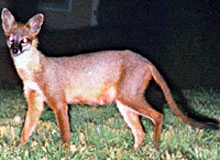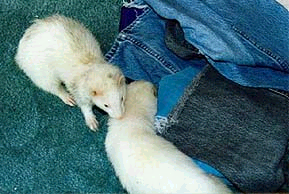 This is from the November 1992 edition of Harper's magazine.I have heard these stories before
This is from the November 1992 edition of Harper's magazine.I have heard these stories before, though previous versions have a rat and a ferret inserted in the pants, and a "battle to the death" ensuing with a dozen drinks being the wager for the taker.
I have little doubt that this kind of thing only happens when preceeded by a successful night-time snipe hunt. It is a good story all the same, and who knows (?) it may be true. The world is full of madness.
---------------------------
article follows ------------------------------
Mr. Reg Mellor, the "king of the ferret-leggers," paced across his tiny Yorkshire miner's cottage as he explained the rules of the English sport that he has come to dominate rather late in life. "Ay, lad," said the seventy-two-year-old champion, "no jockstraps allowed. No underpants -- nothin` whatsoever. And it's no good with tight trousers, mind ye. Little bah-stards have to be able to move around inside there from ankle to ankle."
Basically, ferret-legging involves the tying of a competitor's trousers at the ankles and the insertion into those trousers of a couple of peculiarly vicious fur-coated, foot-long carnivores called ferrets.
The brave contestant's belt is then pulled tight, and he proceeds to stand there in front of the judges as long as he can, while animals with claws like hypodermic needles and teeth like number 16 carpet tacks try their damnedest to get out.
From a dark and obscure past, the sport has made an astonishing comeback in recent years. When I first heard about ferret-legging, in 1972, the world record stood at forty painful seconds of "keepin' 'em down," as they say in ferret-legging circles. A few years later the dreaded one-minute mark was finally surpassed. The current record -- implausible as it may seem -- now stands at an awesome five hours and twenty-six minutes, a mark reached last year by the gaudily tattooed little Yorkshireman with the waxed military mustache who now stood two feet away from me explaining the technicalities of this burgeoning sport.
"The ferrets must have a full mouth o' teeth," Reg Mellor said as he fiddled with his belt., "No filing of the teeth; no clipping. No dope for you or the ferrets. You must be sober, and the ferrets must be hungry-- though any ferret'll eat yer eyes out even if he isn't hungry. So then, lad. Any more questions 'fore I poot a few down for ye?"
"Yes, Reg."
"Ay, whoot then?"
"Well, Reg," I said. "I think people in America will want to know. Well -- since you don't wear any protection -- and, well, I've heard a ferret can bite your thumb off. Do they ever -- you know?"
Reg's stiff mustache arched toward the ceiling under a sly grin. "You really want to know what they get up to down there, eh?" Reg said, looking for all the world like some workingman's Long John Silver. "Well, take a good look." Then Reg Mellor let his trousers fall around his ankles.
A short digression: a word is in order concerning ferrets, a weasel-like animal well known to Europeans but, because of the near extinction of the black-footed variety in the American West, not widely known in the United States. Alternatively referred to by professional ferret handlers as "shark-of-the-land," a "piranha with feet," "fur-coated evil, " and "the only four-legged creature in existence that kills just for kicks," the common domesticated ferret -- Mustela putorius -- has the spinal flexibility of a snake and the jaw musculature of a pit bull.
Rabbits, rats, and even frogs run screaming from hiding places when confronted by a ferret.
Ferreters -- those who hunt with ferrets, as opposed to putting them in their pants -- tell tales of rabbits running toward hunters to surrender after gazing into the torch-red eyes of an oncoming ferret.
Loyal to nothing that lives, the ferret has only one characteristic that might be deemed positive -- a tenacious, single-minded belief in finishing whatever it starts. That usually entails biting off whatever it bites. The rules of ferret-legging do allow the leggers to try to knock the ferret off a spot it's biting (from outside the trousers only), but that is no small matter, as ferrets never let go. No less a source than the Encyclopedia Britannica suggests that you can get a ferret to let go by pressing a certain spot over its eye, but Mellor and the other ferret specialists I talked to say that is absurd. Reg favors a large screwdriver to get a ferret off his finger. Another ferret legger told me that a ferret that had almost dislodged his left thumb let go only after the ferret and the man's thumb were held under scalding tap water -- for ten minutes.
Reg Mellor, a man who has been more intimate with ferrets than many men have been with their wives, calls ferrets "cannibals, things that live only to kill, that'll eat your eyes out to get at your brain" at their worst and "untrustworthy" at their very best.
Reg says he observed with wonder the growing popularity of ferret-legging throughout the '70s. He had been hunting with ferrets in the verdant moors and dales outside of Barnsley for much of a century. Since a cold and wet ferret exterminates with a little less enthusiasm than a dry one, Reg used to keep his ferrets in his pants for hours when he hunted in the rain -- and it always rained where he hunted.
"The world record was sixty seconds. Sixty seconds! I can stick a ferret up me ass for longer than that."
So, at age sixty-nine, Reg Mellor found his game. As he stood in front of me now, naked from the waist down, Reg looked every bit a champion.
"So look close," he said again.
I did look, at an incredible tattoo of a zaftig woman on Reg's thigh. His legs appeared crosshatched with scars. But I refused to "look close."
"Come on, Reg," I said. "Do they bite your -- you know?"
"Do they!" he thundered with irritation as he pulled up his pants. "Why, I've had 'em hangin' from me tool for hours an' hours an' hours! Two at a time -- one on each side. I been swelled up big as that!" Reg pointed to a five-pound can of instant coffee.
I then made the mistake of asking Reg Mellor if his age allowed him the impunity to be the most daring ferret legger in the world. "And what do ye mean by that?" he said.
"Well, I thought since you probably aren't going to have any more children --"
"Are you sayin' I ain't pokin' 'em no more?" Reg growled with menace. "Is that your meaning? 'Cause I am pokin' 'em for sure."
A small red hut sits in an overgrown yard outside Reg Mellor's door. "Come outta there, ye bah-stards," Reg yelled as he flailed around the inside of the hut looking for some ferrets that had just arrived a few hours earlier. He emerged with two dirty white animals, which he held quite firmly by their necks. They both had fearsome unblinking eyes as hard and red as rubies.
A young man named Malcolm, with a punk haircut, came into the yard on a motorcycle. "You puttin' 'em down again, Reg?" Malcolm asked.
Reg took one of the ferrets and stuck the beasts head deep into his mouth.
"Oh yuk, Reg," said Malcolm.
Reg pulled the now quite embittered-looking ferret out of his mouth and stuffed it and another ferret into his pants. He cinched his belt tight, clenched his fists at his sides, and gazed up into the gray Yorkshire firmament in what I guessed could only be a gesture of prayer. Claws and teeth now protruded all over Reg's hyperactive trousers. The two bulges circled round and round one leg, getting higher and higher, and finally...they went up over to the other leg.
"Thank God, " I said.
"Yuk, Reg," said Malcolm.
"The claws," I managed. "Aren't they sharp, Reg?"
"Ay," said Reg, laconically. "Ay."
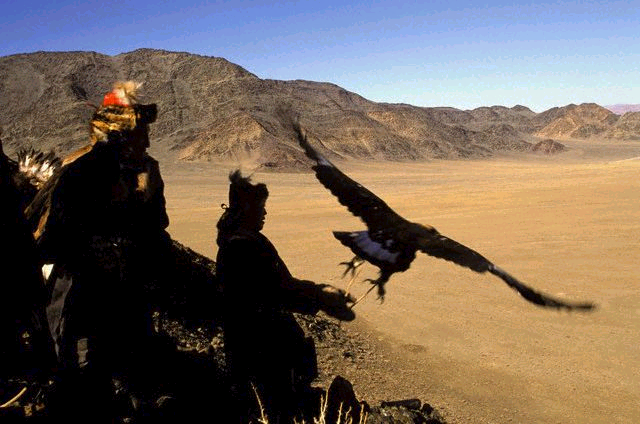


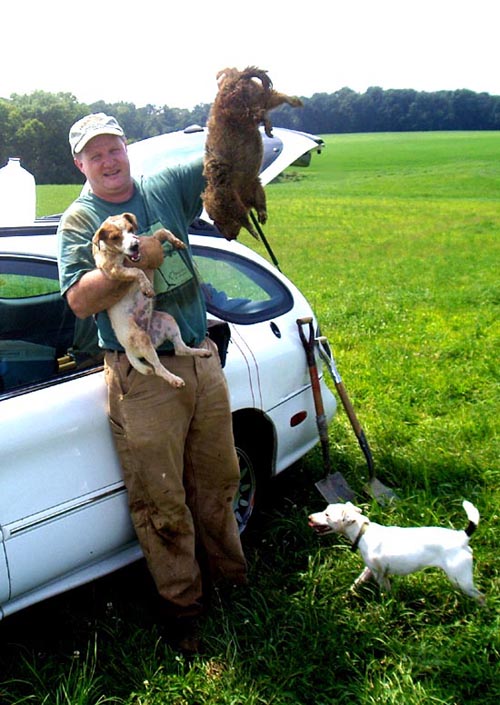
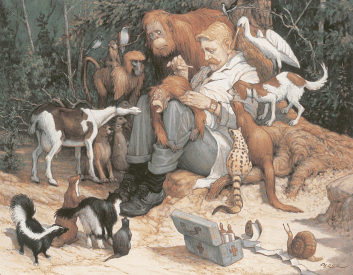
 .
. .
.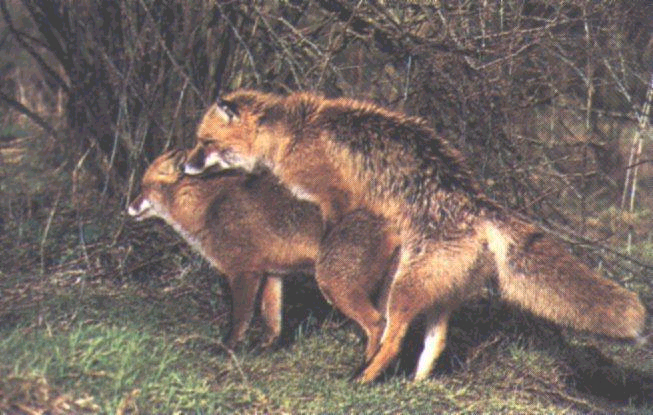


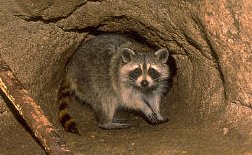

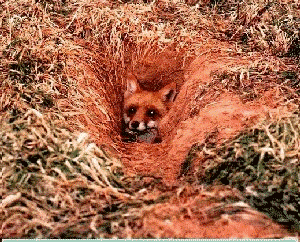

 .
. 
.jpg)
